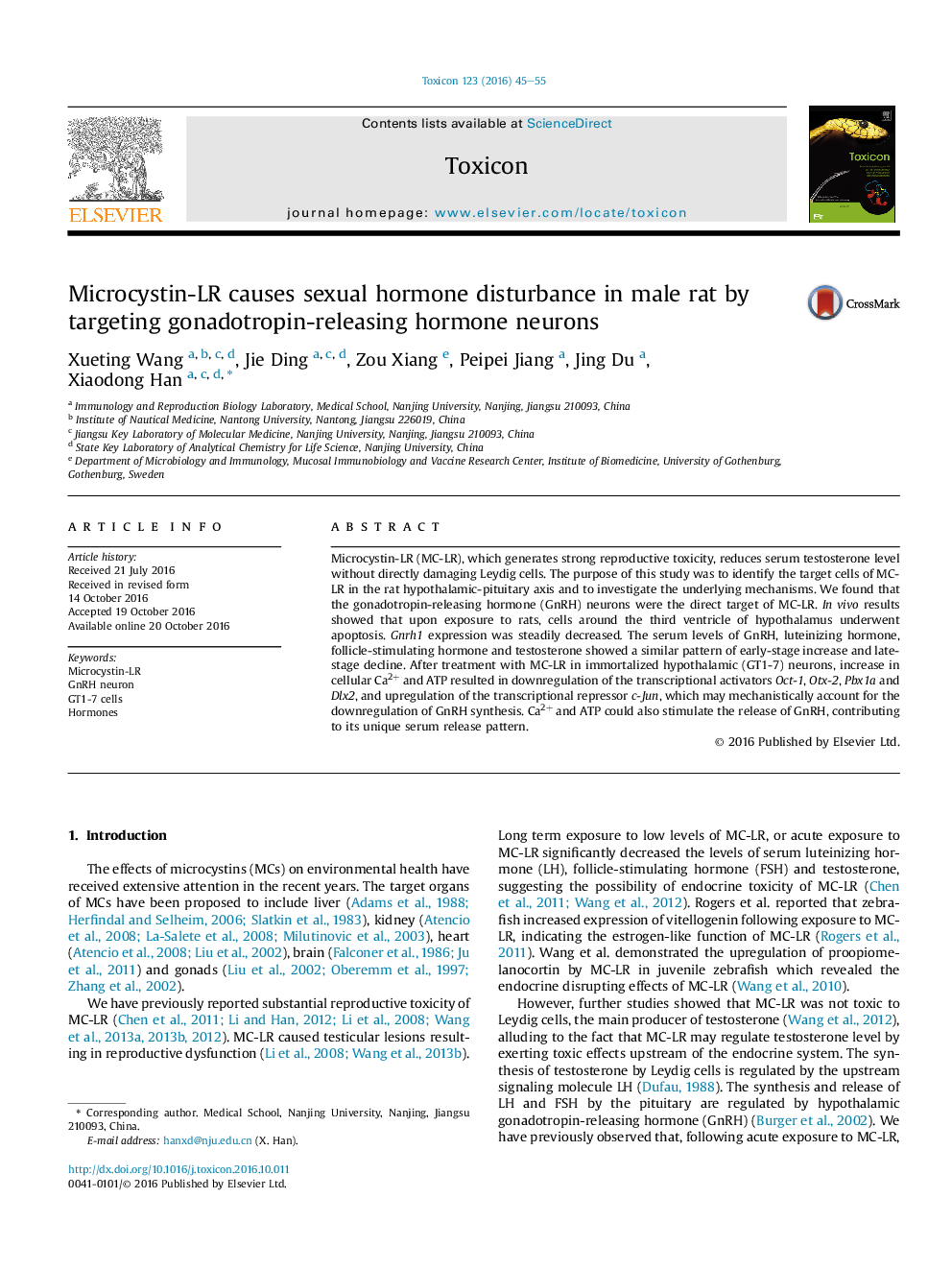| Article ID | Journal | Published Year | Pages | File Type |
|---|---|---|---|---|
| 5519471 | Toxicon | 2016 | 11 Pages |
â¢MC-LR directly act on the gonadotropin-releasing hormone neurons.â¢MC-LR similarly impacted the release of GnRH, LH, FSH and testosterone.â¢MC-LR decreased GnRH synthesis by reducing Oct-1, Otx-2, Pbx1a and Dlx2.â¢MC-LR stimulated GnRH release by increasing cellular Ca2+ and ATP.
Microcystin-LR (MC-LR), which generates strong reproductive toxicity, reduces serum testosterone level without directly damaging Leydig cells. The purpose of this study was to identify the target cells of MC-LR in the rat hypothalamic-pituitary axis and to investigate the underlying mechanisms. We found that the gonadotropin-releasing hormone (GnRH) neurons were the direct target of MC-LR. In vivo results showed that upon exposure to rats, cells around the third ventricle of hypothalamus underwent apoptosis. Gnrh1 expression was steadily decreased. The serum levels of GnRH, luteinizing hormone, follicle-stimulating hormone and testosterone showed a similar pattern of early-stage increase and late-stage decline. After treatment with MC-LR in immortalized hypothalamic (GT1-7) neurons, increase in cellular Ca2+ and ATP resulted in downregulation of the transcriptional activators Oct-1, Otx-2, Pbx1a and Dlx2, and upregulation of the transcriptional repressor c-Jun, which may mechanistically account for the downregulation of GnRH synthesis. Ca2+ and ATP could also stimulate the release of GnRH, contributing to its unique serum release pattern.
